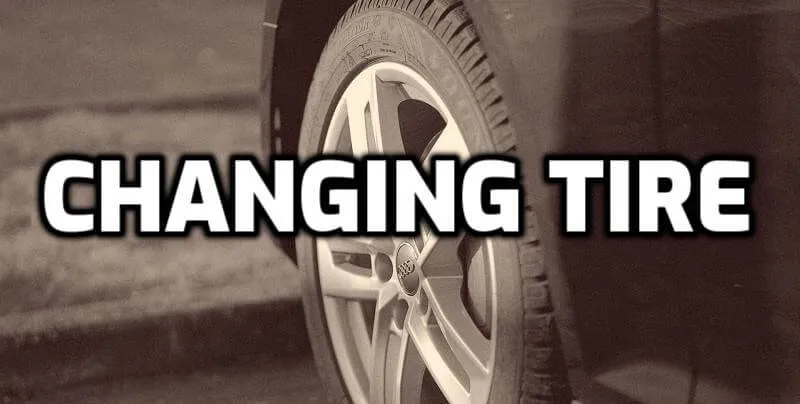How Do You Know When to Change a Tire?

When your tire is flat, you change it. Simple enough, right? What about when the tread on your tires has worn down to a certain point? How do you know when that point is reached? This blog post will teach you what to look for to ensure that it’s time for new tires.
Two Options to Understand
- Examining Tread Integrity
- Noticing Signs of Tire Damage
Examining Tread Integrity
In here, we are going to talk about how to check Tread Integrity so that I can understand when to change the tire.
Tread Recommendations
Tire treads are important to Improve Traction and Avoid Hydroplaning on Roads. It is recommended that you replace your tires when the tread depth measures below this mark.
Once The Tread Is Down To 2⁄32 Inch, The Tire Is No Longer Safe And Illegal In Most Areas Of The World. You can check your car manual to understand the tread level.
Use A Coin
There are some ways to check your tire’s treads. First, you can use a coin. Hold the edge of a quarter between your thumb and forefinger with George Washington facing up (heads). Now place the quarter at one of the edges where another groove meets it and try to fit it in:
If there is no way that you can fit the quarter into that groove, then your tire is definitely time for a change. If you can get it to slide in partway (or even halfway), this means that there’s enough tread left on the edge of the coin to be able to grip and turn usually.
If you cannot fit any other area of Washington’s head inside another groove, then your tire is almost done for. If you can only fit the corner of his head into a groove and not any other part (not even his ear), this means that there’s very little tread left on your tires.
Once again, if Washington’s entire face fits inside another groove or multiple grooves easily with plenty of room to spare, then you have a long time before your tire needs changing.
Tread Depth Indicator
You can use Tread Depth Indicator to check your car tread depth level. It is a small rubber nipple on the side of your tire, usually no more than an inch or two in length. If you cannot see this indicator (it’s often hidden by mud and dirt), take a look at your car manual to find out where it can be found on your specific vehicle types.
We show above some steps to check your tire tread depth level; if you have any questions, don’t hesitate to get in touch with us.
Noticing Signs of Tire Damage
In addition to checking the local laws about when tires need changing, there are a few other signs that can tell you it’s time for new rubber. These include: – Cracks in sidewalls or casing. If you notice cracks in the sidewalls of your tire, it’s time for a replacement.
If you see cracks on the outside edge where it meets with another wheel or if there are any cracks at all, this means that there is too much strain being put onto the tire and its seams. Cracks in these places can be signs of extreme wear over time.
- Bulges or bubbles in sidewalls If you notice bulges, blisters, or lumps on the side of your tire that are not within a tread groove and can’t be blamed on another car’s tires then this means that there is an internal problem with your wheel due to too much pressure. This could mean it needs replacing soon.
- Presence of nails or other debris in tread This one is pretty self-explanatory, but if you feel your tire “stick” when driving over something, it’s probably because there’s a sharp object stuck inside the rubber casing. If this happens, get off at the next exit and have someone look at it ASAP to see what needs to be done.
- Separation between tread and rubber If you can see the part of your tire where it meets with other wheel components, this is a sign that there’s too much pressure on the seams. It might not seem like an immediate problem, but if left unattended could lead to further damage or worse – having your entire wheel explode while you’re driving.
- Sudden drop in tire pressure If you notice that your car is pulling to the right or left while you are driving, this might be because one of your tires has lost all its air and needs filling up immediately. It would be best if you took it to a mechanic ASAP to get everything sorted out properly, so you don’t have any serious accidents.
Conclusion
You can use Tread Depth Indicator to check your car tread depth level. If you cannot see this indicator (it’s often hidden by mud and dirt), take a look at your car manual to find out where it can be found on your specific vehicle types. There are some steps that we show above to check your tire tread depth level. If you have any questions, please contact us.
If you notice bulges, blisters, or lumps on the side of your tire that are not within a tread groove and can’t be blamed on another car’s tires, then this means that there is an internal problem with your wheel due to too much pressure. This could mean it needs replacing soon. If you notice that your car is pulling to the right or left while you are driving, this might be because one of your tires has lost all its air and needs filling up immediately. It would be best if you took it to a mechanic ASAP to get everything sorted out properly so you don’t have any serious accidents.
Frequently Asked Questions (FAQ)
Related Article
